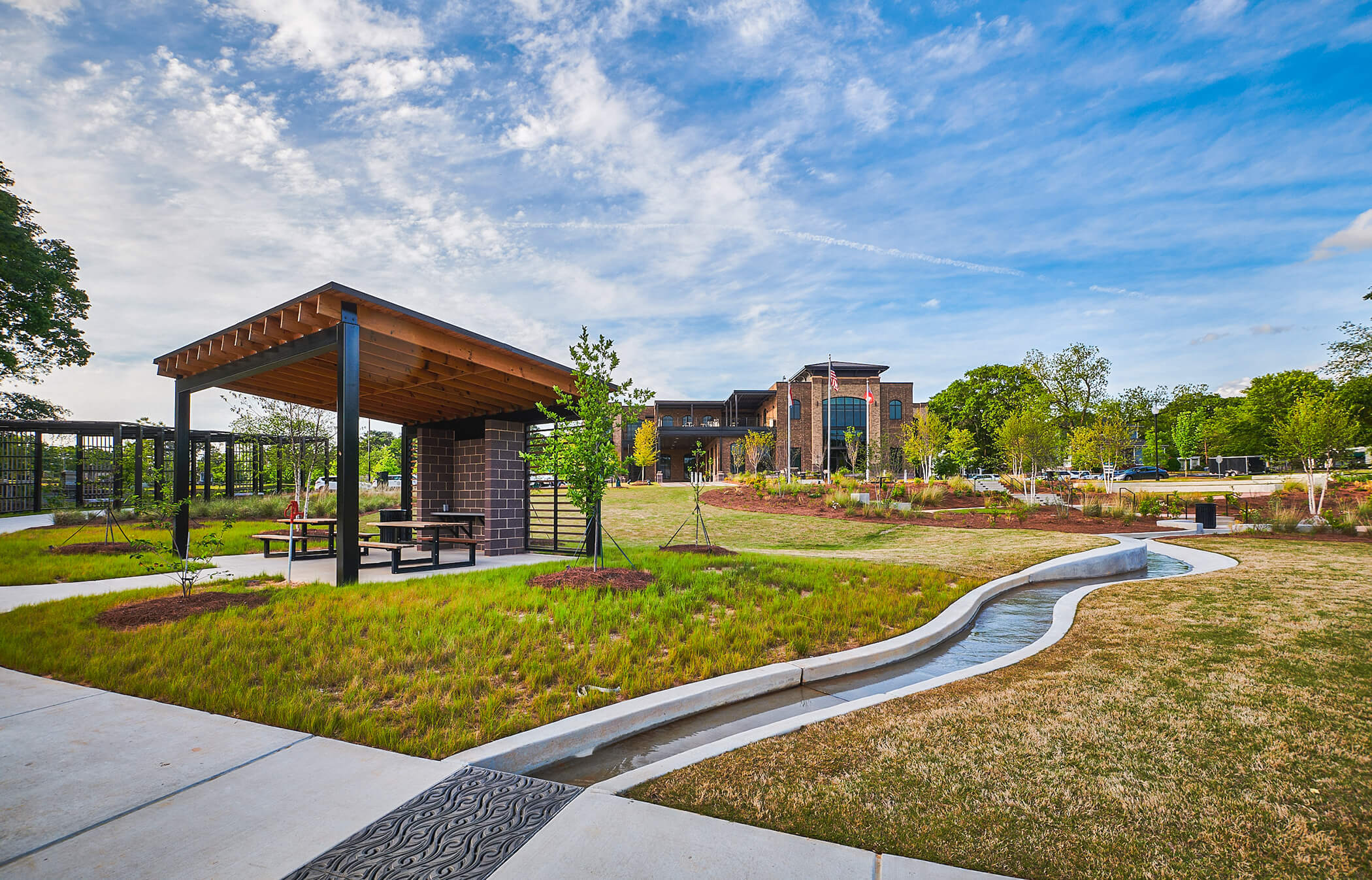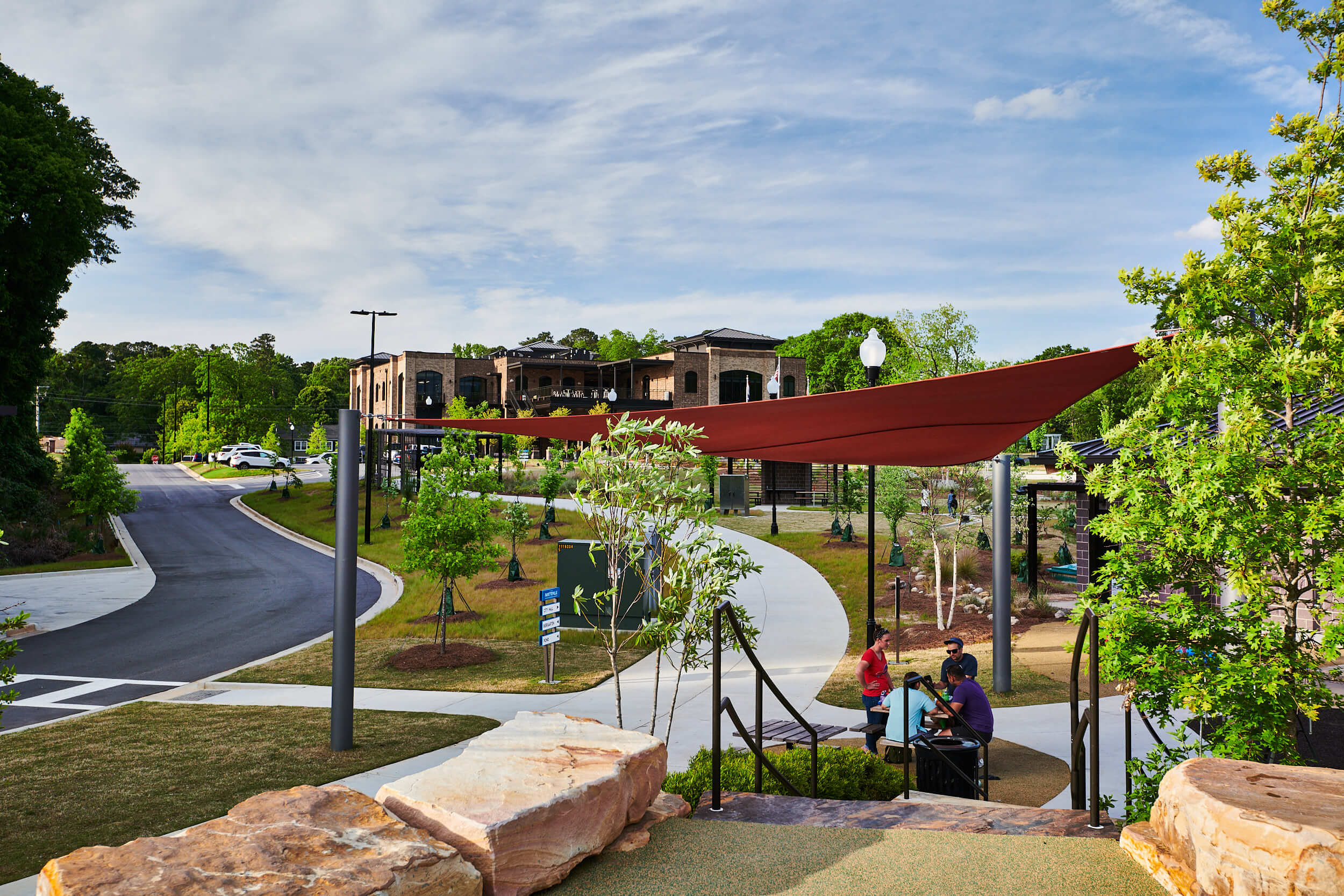Enhancing communities through thoughtful planning and design
May 1, 2024 · Insights

There are numerous aspects that contribute to quality of life in a community, many of which local leaders play a critical role in providing. Whether focusing on infrastructure development, healthcare, education, recreational opportunities or other facets, thoughtful planning and design can significantly enhance these areas not only to meet needs, but also to accomplish a community’s vision.
Design teams bridge the gap between functionality and aesthetics, combining elements of design and engineering to create environments that blend with needs and wants. From the meticulous choreography of streets and buildings to the incorporation of green spaces and more, these elements can greatly impact community design.
Through thoughtful planning, communities can prepare for growth by considering factors such as population density, traffic flow, accessibility and so much more. This proactive thought can help create spaces that are not only visually appealing but also conducive to human interaction and well-being. This can involve designing walkable neighborhoods with mixed land uses, prioritizing public transportation and incorporating amenities such as parks and recreational facilities.
Design also plays a key role in fostering unity and identity within a community. Buildings and public spaces should reflect the places in which they’re being developed, instilling pride and a sense of belonging among constituents. Communities should also be inclusively designed to foster spaces that can be used by all people, creating even more connection among residents. When planning for the future, it’s also important to have action items and goals that will protect the character of certain areas, whether that be through zoning regulations or requirements of those looking to develop.

In Fayetteville, Goodwyn Mills Cawood’s (GMC) team worked closely with local leaders to design a new city hall and 10-acre City Center Park, which serves as a destination spot for residents and visitors alike. The building houses the city government offices, with easy public access to each department and the city council chambers on the ground level. The upper levels house the city manager, mayor, department directors and features a large upper-level plaza overlooking the park, which is available for afterhours events. The park has amenities such as an amphitheater, splash pad, a retention pond, trails, open lawn, dog park and connection to the existing community garden.
The design serves to position the municipal complex as not only a place where city business takes place, but also functions as a community gathering space that fosters connection among residents and visitors. Since its completion, the surrounding area is now bustling with activity, with mixed-use development including a brew-pub, event center, multifamily living and more now in place.
Recreational amenities are key in fostering healthy communities, from parks and greenspaces, to trails, sports complexes and athletic fields.
Bryan County is currently working to provide enhanced recreational opportunities for its citizens, with significant additions and upgrades at DeVaul Henderson Park. Once completed, the park will feature outdoor amenities for soccer, tennis, football, baseball and softball, as well as a play area and dog park. A 19,000-square-foot gymnasium will house two basketball courts, meeting space, concession stand and a large outdoor covered seating area.
With its location adjacent to McAllister Elementary School, it serves as a convenient location for families, as well as for after-school sports practices and extracurricular activities. In addition to the recreational amenities, the project also takes into consideration supporting infrastructure, including additional parking, a two-lane roadway, access point to Highway 144 Spur, domestic and fire water line connections to serve the building and a pump station for the sanitary sewer.
In Glynn County, leaders are investing in improvements to Coast Guard Beach Park, one of the area’s primary public beach access points. The project will help enhance the quality of life for residents and visitors by beautifying primary public beach access, preparing the county for future demands on beach amenities and providing quality amenities to create a positive experience for all beachgoers. The project will increase the public/visitor service area by almost four times, provide more parking balanced with natural enhancements and improve traffic flow. However, these improvements will also help to resolve existing challenges related to flooding and stormwater runoff into marshes and neighborhoods, as well as addressing safety issues.
In all of these efforts, planning is key. Comprehensive planning efforts can help leaders ensure their communities are prepared to support upcoming growth and provide the infrastructure and services needed to support their constituents.
GMC’s planning experts have worked with communities throughout Georgia and the Southeast to develop comprehensive plans, which serve as action-oriented, strategic guides shaped by the community’s values and establish a collective vision, with short- and long-term actions to achieve that vision. A comprehensive plan may include elements such as city-wide physical development; commercial corridor redevelopment; economic development; zoning updates; city business and development processes; parks, recreation and trails; infrastructure planning; neighborhood revitalization; downtown connectivity; youth engagement; transportation; municipal assets planning; and more.
Currently, the Bulloch County Board of Commissioners and Statesboro City Council are developing the Statesboro Bulloch County Long-Range Transportation Plan, which will provide leaders with a plan to support transportation needs of their communities for the next 20 years. GMC planners and transportation engineers began the process by gathering input from citizens on what they see as the current and future transportation needs for Statesboro and Bulloch County.
These types of plans take into account numerous factors, even asking drivers to rank their three greatest challenges to driving in Bulloch including aspects from congestion, safety concerns and road condition problems such as potholes and debris, to limited access to electric vehicle charging stations. The plan will also take into account data including travel demand modeling to look at alternative scenarios for traffic growth and transportation needs and how these could be affected by various projects, as well as traffic counts and data from GDOT.
The goal would be to produce detailed action plans for road improvement projects and potentially also for projects to benefit alternative transportation modes such as walking and cycling, extending through 2045. Projections for funding of projects from federal, state and local sources is also expected for a five-year first stage.
While some needs may be apparent when planning for the future, some may be less obvious at first glance. It’s important to the think about development of not only critical infrastructure like transportation, water, sewer, healthcare and others, but also services like childcare facilities, restaurants, entertainment and more.
With any comprehensive plans, whether focused on transportation or overall master planning of the community, the goal is to have some projects leaders can focus on immediately, but also projects that can support the future growth that is coming.
GMC’s team of architects, engineers, planners, landscape architects and more, strives to serve the community through considerate design that pairs with the vision of what leaders and their communities want and need. Through collaboration and thoughtful planning, community leaders and professionals play a pivotal role in crafting communities that go beyond mere structures, aiming instead to enhance the quality of life for all residents.